The best ringflash for macro photography
Make sure your macro shots of insects and flowers are beautifully lit using a dedicated ringflash
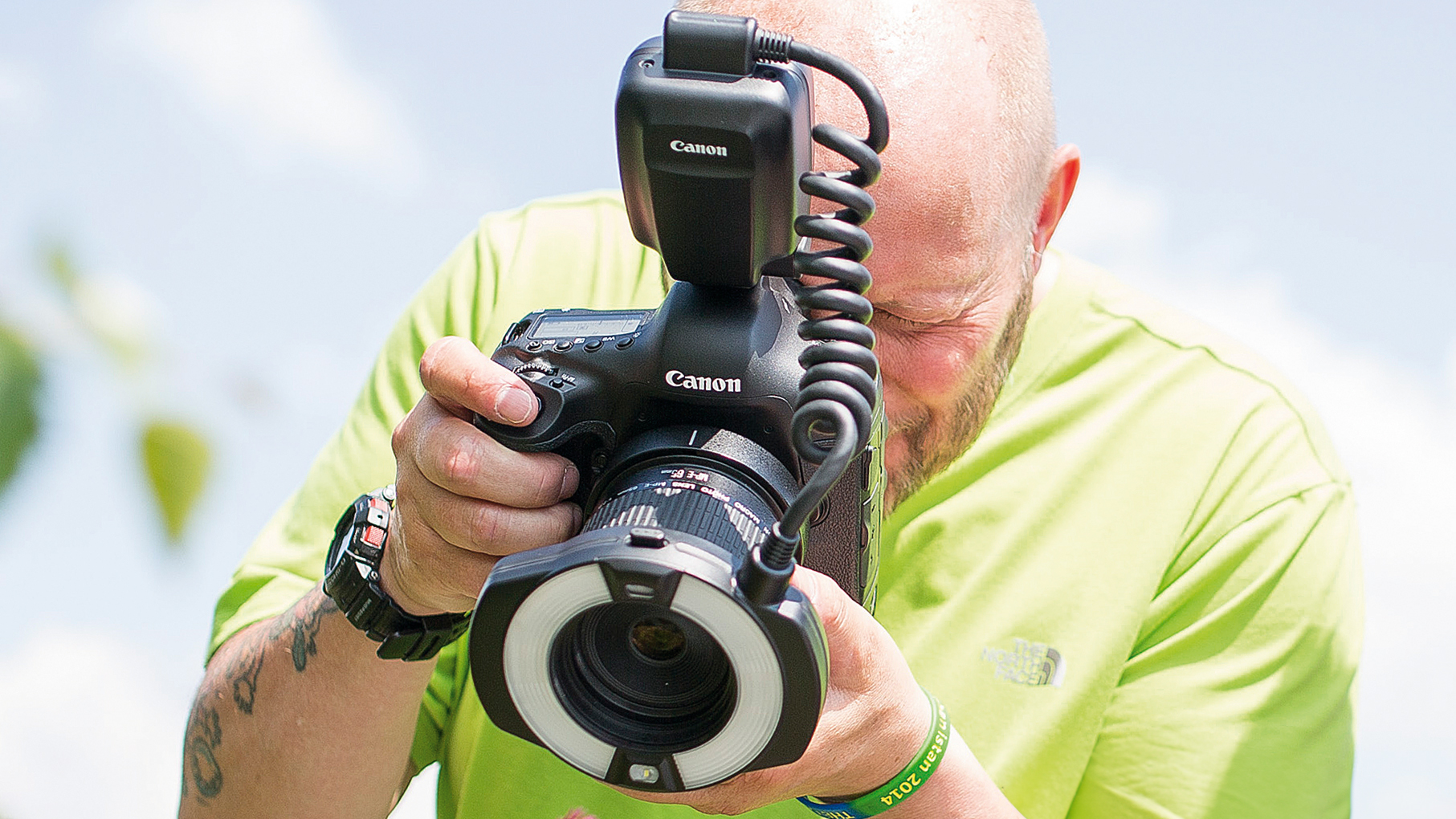
The best ringflash has traditionally been strongly recommended purchase for any macro photographer. If you're on the lookout for interesting plants and insects to capture with your macro lens, you need a way to provide a quick bit of fill light, especially if you keep finding yourself inadvertently casting great big shadows over the things you're trying to photograph! There are alternative solutions nowadays using carefully positioned LED panels, but the ringflash is a brilliant integrated solution to the problems of lighting creepy-crawlies and the like.
A ring flash has the additional advantage that it can provide enough light to allow you to stop down the aperture enough to get your whole subject in focus. The built-in flash on your camera won't cut it, and hotshoe flashguns often won't work too well with macro lenses, with the two getting in the way of each other. And LED panels will struggle to give enough power to give the aperture and shutter speed combination you need for moving subjects.
The best macro flashguns, also known as a ringflash, attach around the front of a lens to provide illumination without getting in the way or casting shadows. This also has its applications in professional sciences and forensics; you may have seen a ringflash being used by crime-scene photographers on a show like CSI!
One thing to note that that here we've compiled ringflash units, for photography. If you're looking for a ringlight for video, then head to our guide to the best ringlights for vloggers.
There are two types of ringflash available. The genuine ringflash uses a circular flash tube to provide even lighting around the subject. Its advantage is that it creates donut-shaped catchlights in your subjects’ eyes if you use it for portraits.
The alternative is a twin-flash design, which uses two small flash tubes on opposite sides of the lens. These usually have large, semi-circular diffusers to mimic the all-round lighting of a genuine ringflash. The advantage is that you can vary each tube’s output independently. This enables you to create a side-lit effect, which can look better than the flat lighting of a genuine ringflash.
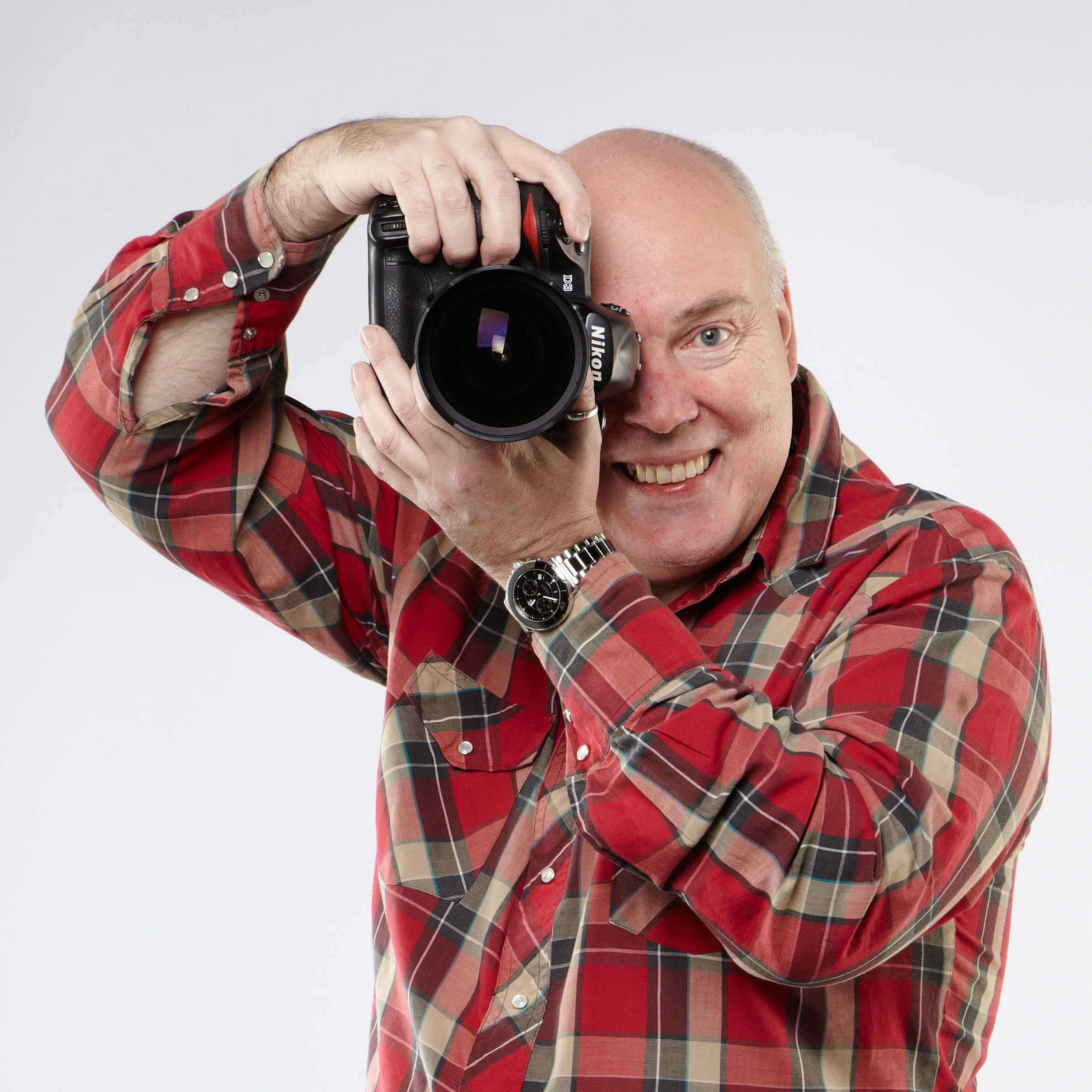
Chris has been writing about photography professionally for nearly 40 years and has tested hundreds of different cameras – and has used a wide variety of macro set-ups and ringflash units. He has been the editor of What Camera, N-Photo, PhotoPlus, Video Camera, and Digital Camera magazines.
The Quick List
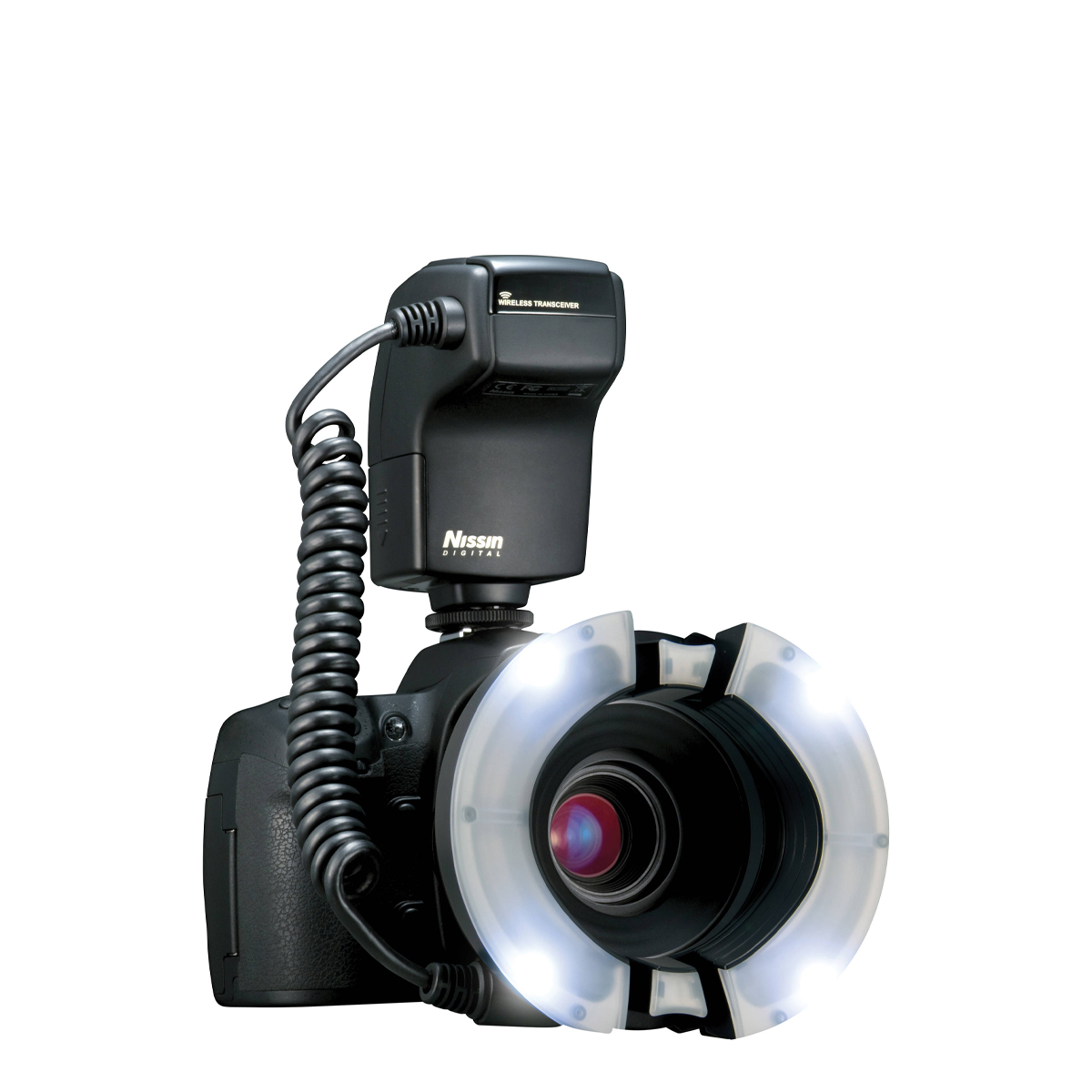
Compatible with Canon, Nikon and Sony cameras, this clever design delivers pleasingly diffuse light with rapid recycle times. Read more below…
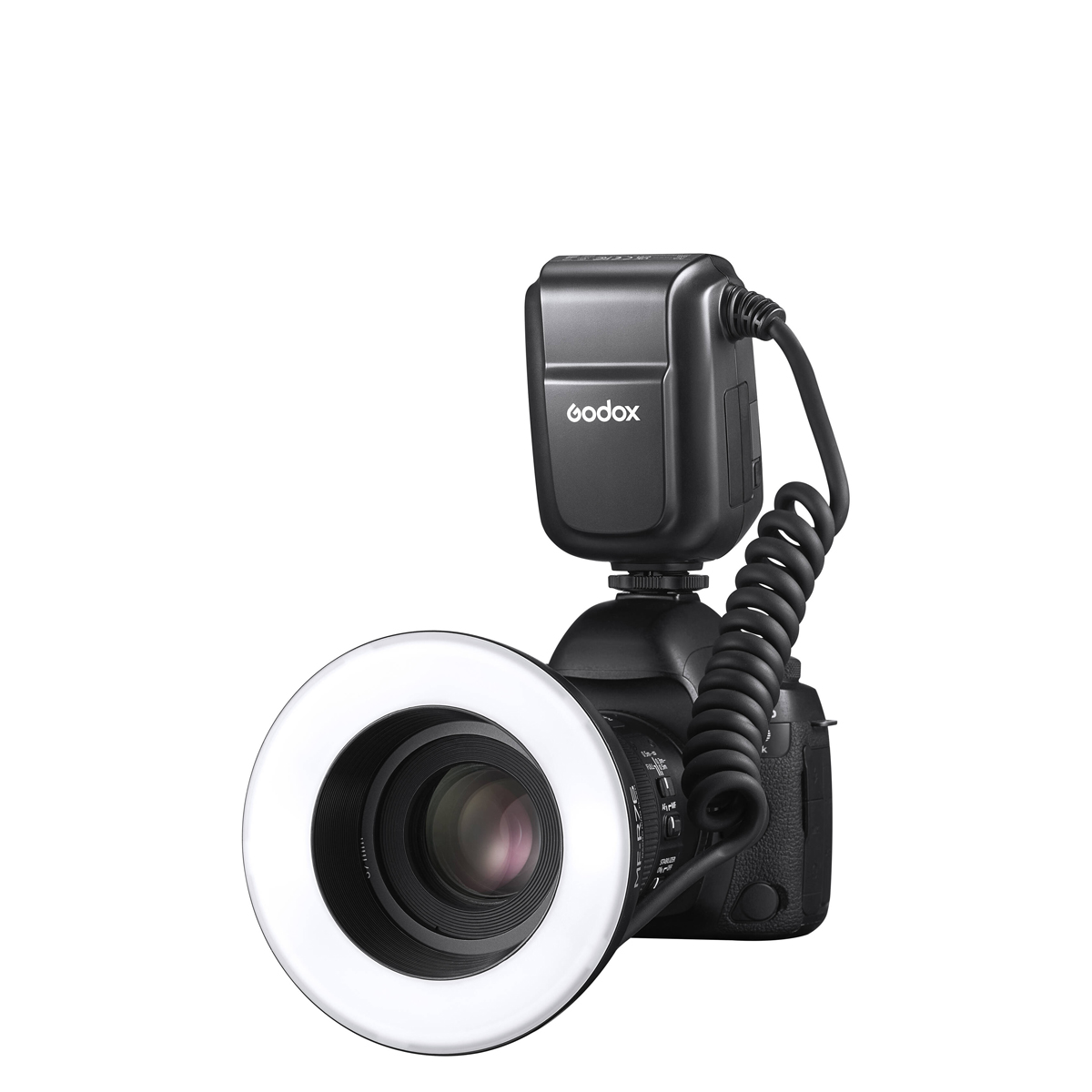
This system for Canon, Nikon or Sony cameras fits on a wide variety of lenses, with individually adjustable flash tubes. Read more below…

With exceptional build quality and revamped controls, this is a quality option that provides beautiful light and accurate metering. Read more below…
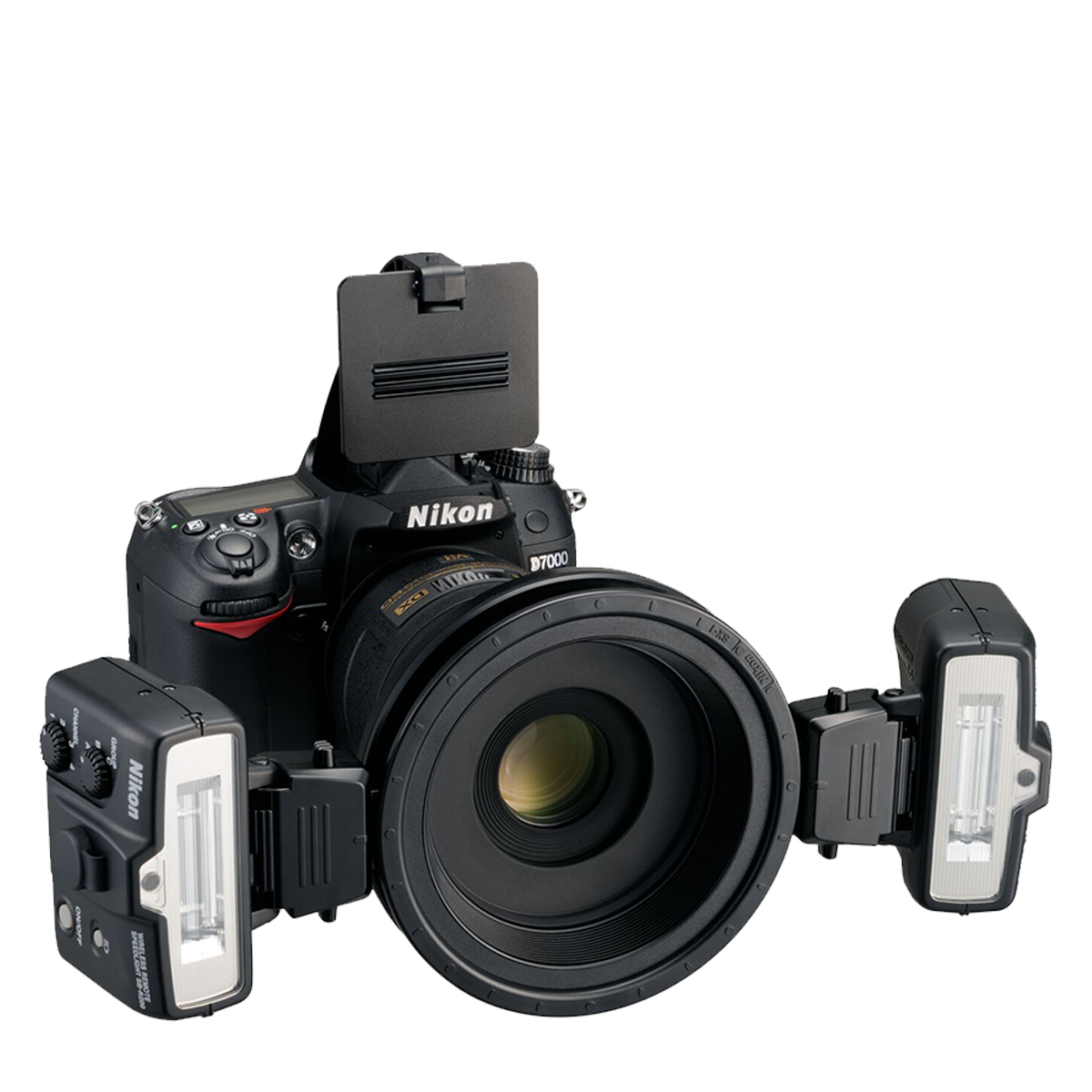
Using twin adjustable lights, this comprehensive kit enables you to customize your setup with colored gels and clip-on diffusers. Read more below…

This system is compact and light, as you’d expect for a Micro Four Thirds camera, and it has the thoughtful bonus of weatherproofing. Read more below…
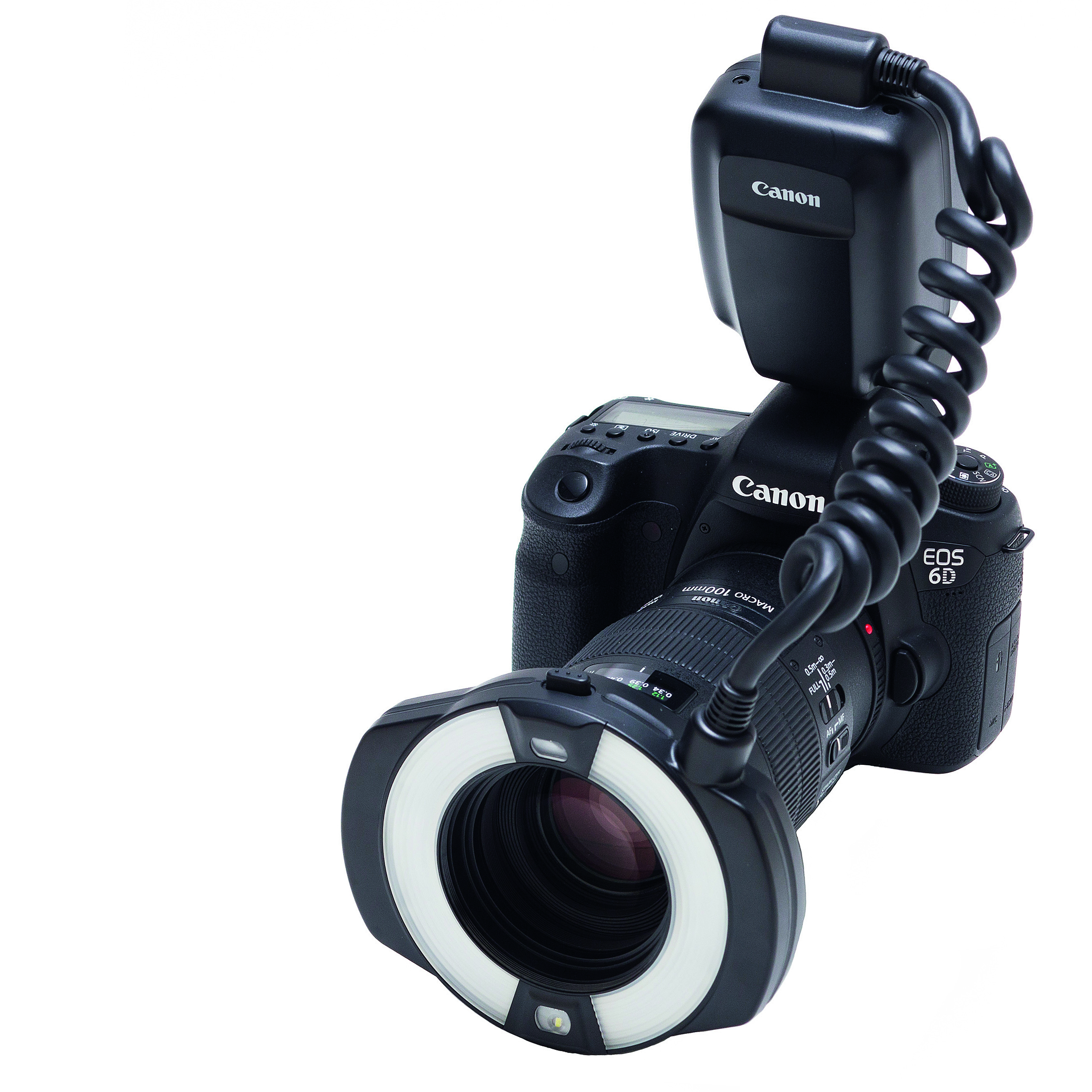
Canon's cheaper macro flash uses a circular diffuser, rather than the twin-lamp approach of the newer MT-26EX-RT. It is less powerful too, but the output is still plenty enough for close-ups. Read more below…
Best ringflash for macro photography
Why you can trust Digital Camera World
Best macro ringflash overall
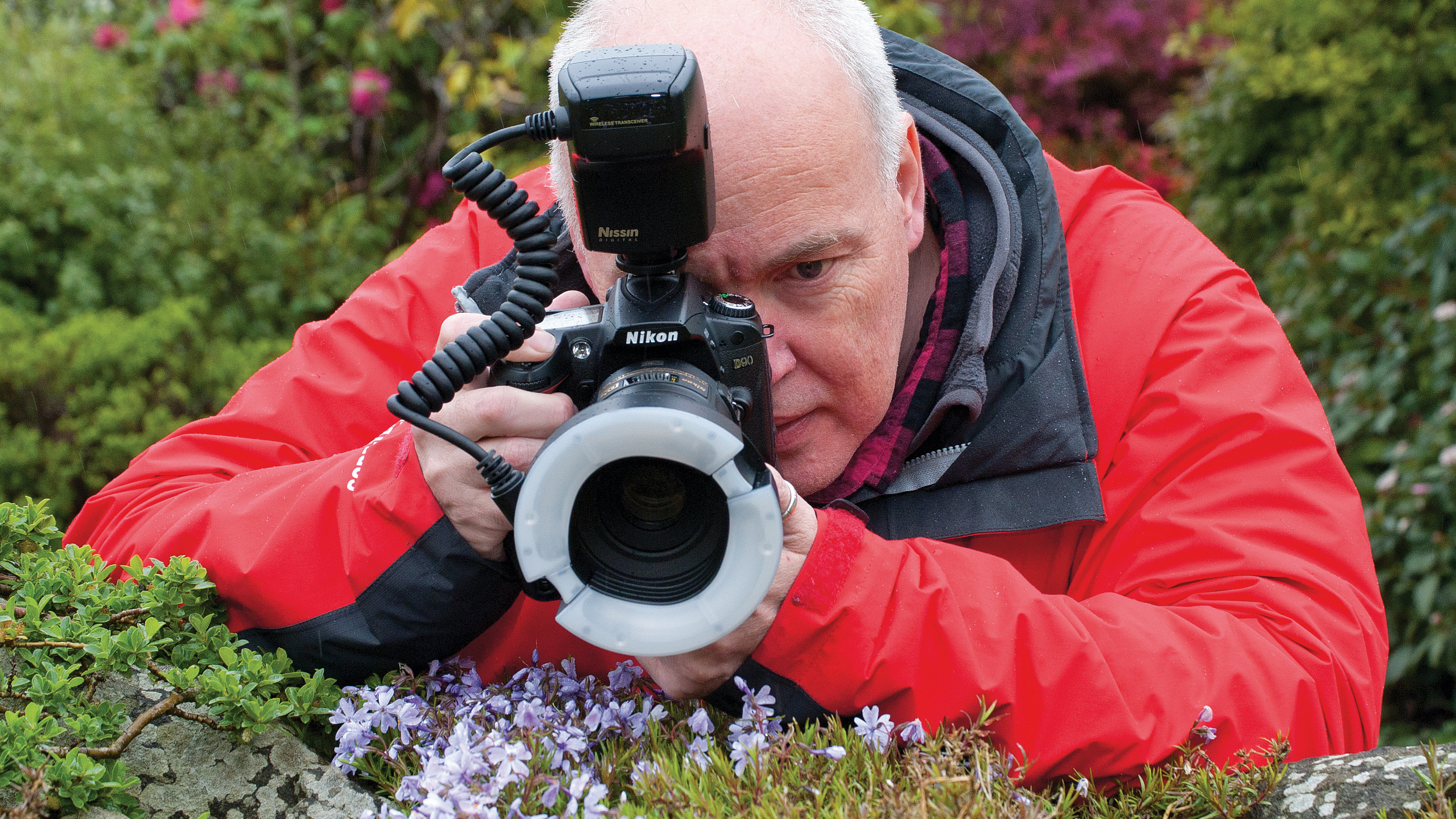

Specifications
Reasons to buy
Reasons to avoid
Nissin’s contender stands out with its clever head design that can expand by 14mm to accommodate lens diameters up to 82mm without vignetting – though the six mounting plates included top out at 77mm.
Other features include a Fine Macro mode, in which the left and right flash tubes can be individually adjusted from 1/128 to 1/1024 power in super-precise 1/6 EV steps (compared to 1/3 EV from full power to 1/64 power). A guide number of 16 provides plenty of poke for portraits or macro photography.
Changing modes is easy with the color LCD on the control unit, and the simple interface also makes light work of configuring the wireless TTL master and slave options. Advance features also include high speed sync and rear curtain sync.
Performance doesn’t disappoint, with the MF18 offering lovely soft light and fast recycle times. Color temperature is a whisker warmer than with the other flashes on test, and the control unit is quite bulky, but if you can live with these minor drawbacks, it’s excellent value for money.
See our full Nissin MF18 review with sample images
Best budget macro ringflash
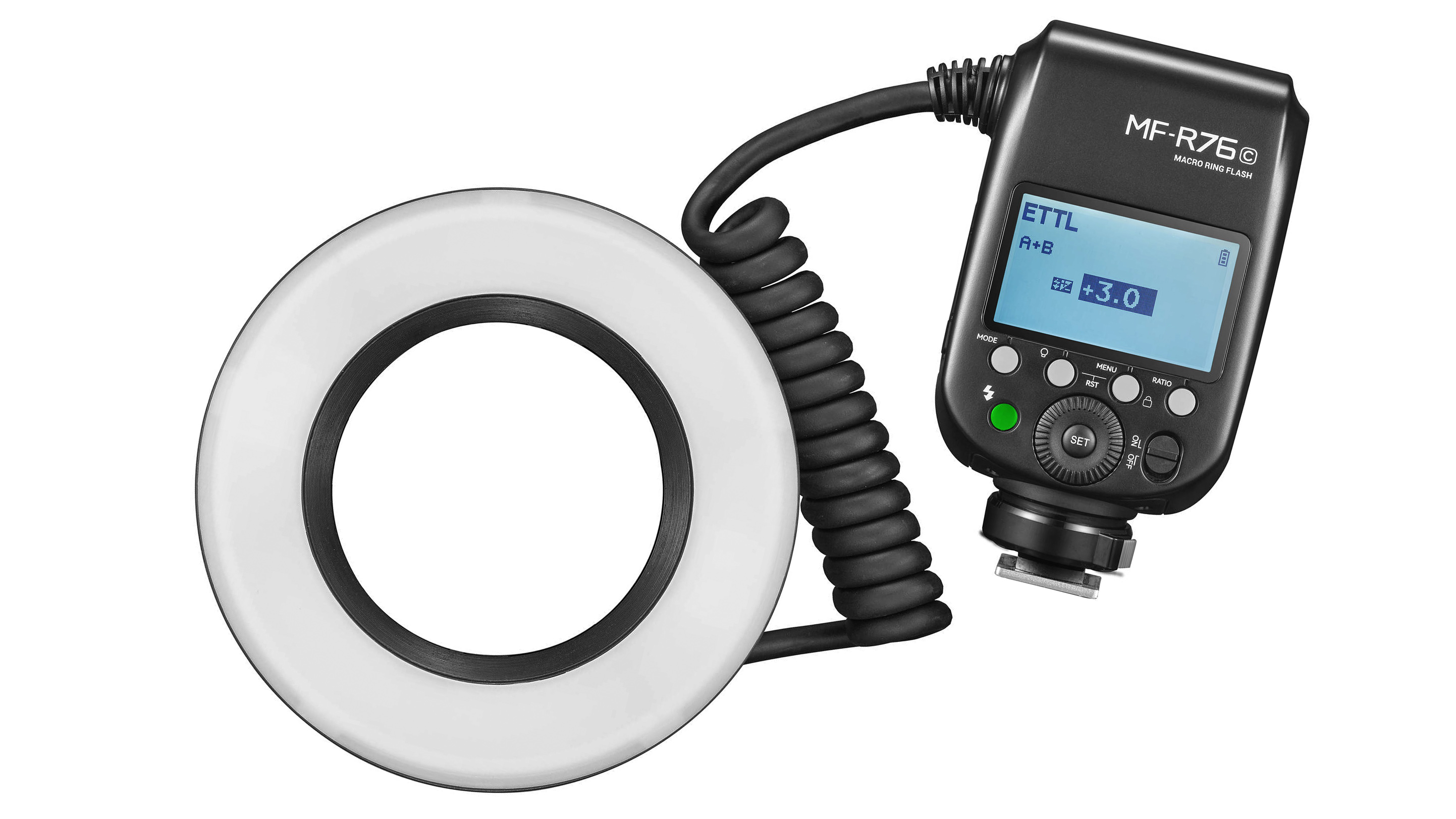
2. Godox MF-R76
Specifications
Reasons to buy
Reasons to avoid
Released in 2023, this is an update of an older Godox ringflash model - but this TTL version provides customized features to work with the latest Sony, Canon and Nikon DSLRs and mirrorless cameras.
Generously, Godox supply this with eight different adaptors (49/52/55/58/62/67/72/77mm) - ensuring it will fit on the front of a wide variety of lenses. This circular ringflash uses two flash tubes, so you can adjust lighting ratios - and you get modeling lights too, which is handy for autofocus. We particularly like that the unit has a removable and rechargeable lithium-ion battery.
Best Canon macro ringflash

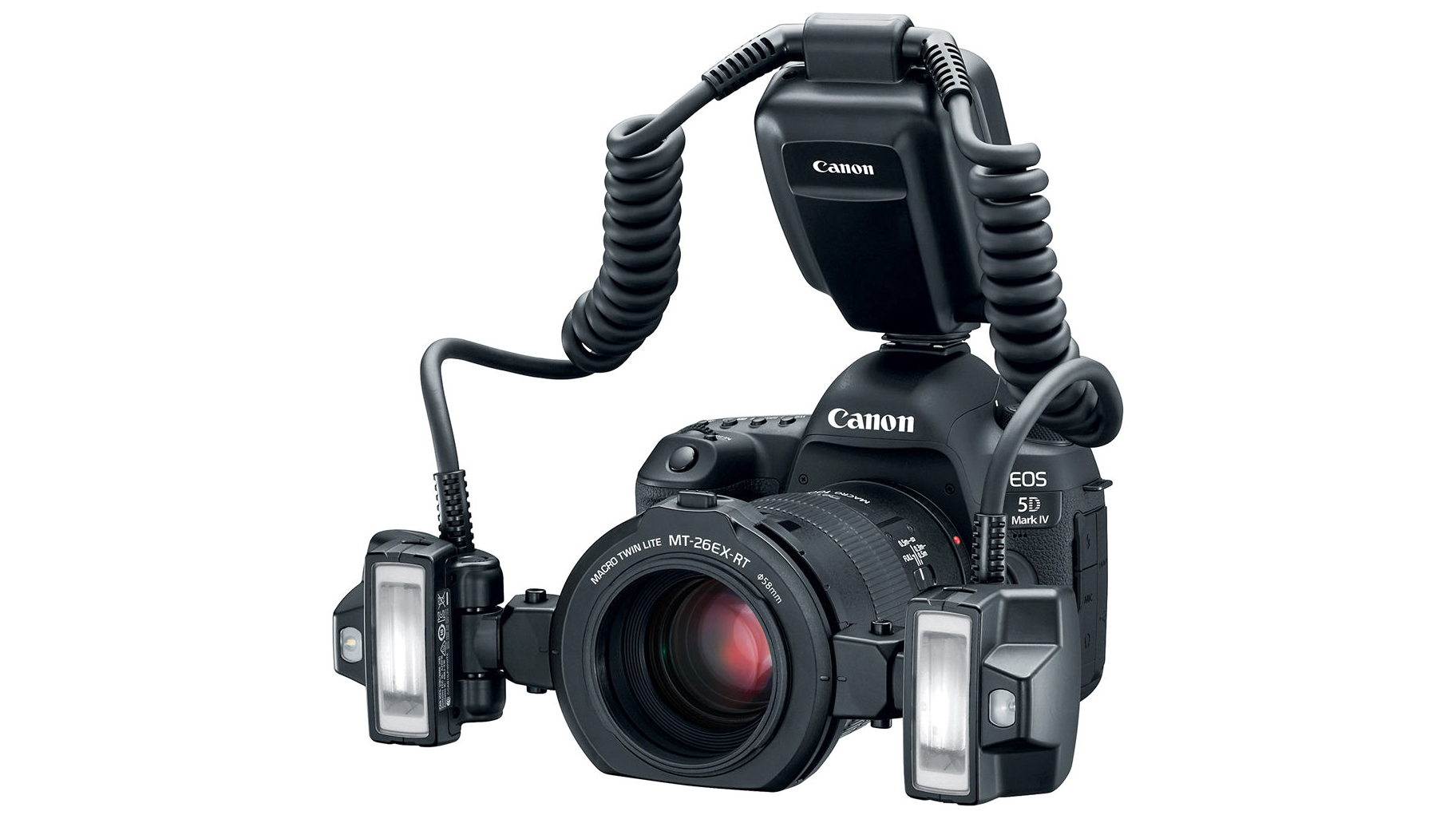
3. Canon Macro Twin Lite MT-26EX-RT
Our expert review:
Specifications
Reasons to buy
Reasons to avoid
Despite its compact size, this unit packs E-TTL II metering, LED focusing lamps, and twin flash tubes with independent power adjustment that can offset their output by up to six stops. A guide number of 26 and a 5.5-second full-power recycle time are acceptable for close-range work.
Build quality is second to none, while a large, clear display makes for effortless usability. We can’t fault the MR-26EX -RT’s performance, either: its light softness is superb, backed up by flawless color rendition and accurate TTL metering.
We are pleased that the outdated control panel of the preceding MT-24EX has been redesigned, with a layout inspired by the 600EX II-RT flashgun. Controls are simple and intuitive, using high-quality switches and dials, and there’s a backlit LCD screen. Instead of a flash tube, the control unit uses two thick coiled cables that connect up two small flash heads.
The only fly in the ointment is lens compatibility: it’s made for Canon macro lenses with 58mm threads, or larger L editions with optional adaptors (see list of compatible lenses).
Read more: Canon Macro Twin Lite MT-26EX-RT review
Best Nikon macro ringflash
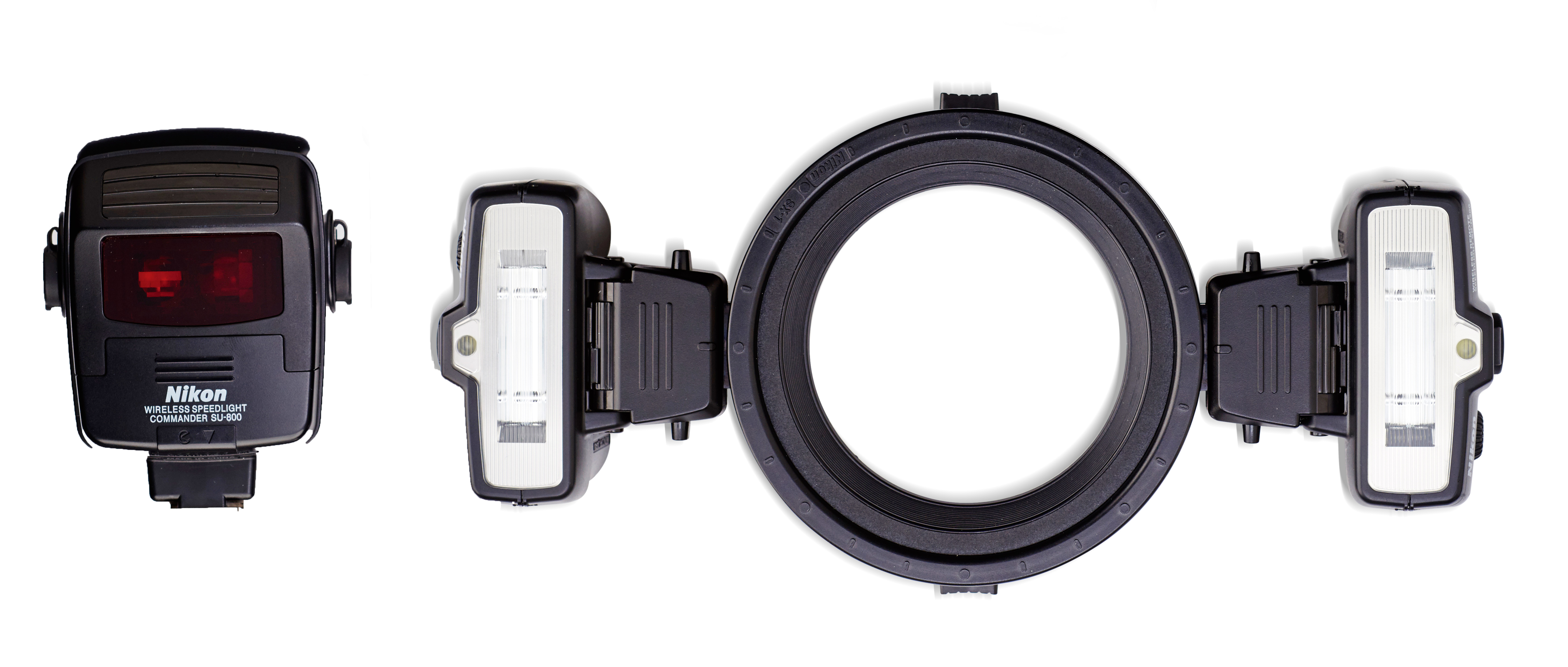
4. Nikon R1 Close-Up Speedlight Remote Kit
Specifications
Reasons to buy
Reasons to avoid
Rather than using a one-piece ring flash, this kit comes with a pair of SB-R200 flashguns that clip onto a mount, which in turn attaches to your lens via included adaptors in sizes from 52mm to 77mm.
The modular design lets you precisely position each flash to fire at the perfect angle, and there’s the option to add extra flash units. The creative customization continues with some included colored gels, and clip-on diffusers, which improve light softness when shooting extreme close-ups.
But with so many separate elements, set-up can be slow. Other annoyances include the relatively pricey and uncommon CR123 batteries that power each flash, and we found the light quality to be a tad harsh without the diffusers fitted, though color rendering is excellent.
You’ll also need to be sure your Nikon’s pop-up flash has a commander mode to trigger the SB-R200s. If not, there’s always Nikon’s expensive R1C1 version of the kit, with adds in Nikon's SU-800 commander unit.
Best OM and Olympus macro ringflash
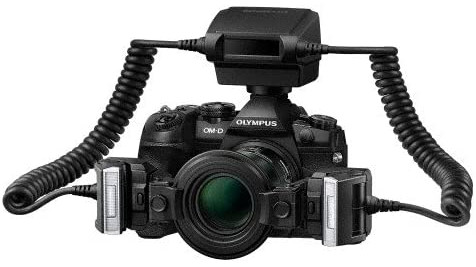
5. Olympus STF-8 Macro Flash
Specifications
Reasons to buy
Reasons to avoid
The compactness and light weight of the Olympus STF-8 Macro Flash makes a lot of sense when you consider the fact that it's designed to work with Micro Four Thirds systems. In a nice extra, however, it is also fully splashproof and weatherproof, making it a great choice for outdoor macro sessions roaming for insects and flowers to photograph in fresh rainfall. The relatively low guide number means you might struggle a little with larger subjects, but this twin-flash kit is still an excellent choice for macro shooting with an OM System or Olympus camera.
Best budget Canon macro ringflash

6. Canon Macro Ring Lite MR-14EX II
Specifications
Reasons to buy
Reasons to avoid
The MR-14EX II is a smaller, older, and less powerful alternative to its MT-26EX-RT –and it is also significantly cheaper. Despite its size, the unit packs E-TTL II metering, LED focussing lamps, and twin flash tubes with independent power adjustment that can offset their output by up to six stops. A guide number of 14 and a 5.5-second full-power recycle time are acceptable for close-range work.
Build quality is second to none, while a large, clear display makes for effortless usability. We can’t fault the MR-14EX II’s performance, either: its light softness is superb, backed up by flawless color rendition and accurate TTL metering.
The only fly in the ointment is lens compatibility: it’s made for Canon macro lenses with 58mm threads, or larger L editions with optional 67mm or 72mm adaptors.
How to choose the best macro ringflash
Guide number
The guide number (GN) measures the maximum output of the flash. It gives the range in metres if using an aperture of f/1 at ISO100. Divide it by your actual aperture to give the real range. Ringflashes are used at close distance, so the GN will be small – around 15.
TTL metering
This is the automatic flash metering system used by most modern DSLRs and mirrorless cameras, which uses a preflash system to ensure the subject gets the right amount of light.
Manual flash
This enables you to fix the output of the flash. Settings are expressed as a fraction of the full power – 1/2, 1/8, 1/64 etc. The more options the better.
Connection rings
Most ringflashes include attachment rings to connect to the front of different-sized lenses, but ensure the model you choose is large enough for your lens (and be warned some adaptor rings cost extra).
High-speed sync (HSS)
High-speed sync enables you to use shutter speeds faster than the usual 1/200 or 1/250 sec maximum possible with flash. Useful for fast-moving insects, or when using the widest apertures to blur backgrounds.
How we test flashguns
We test all available features for each flashgun that goes through our labs. To test power output, we used a Sekonic flash meter placed at a distance of one meter from each flashgun. We check the complete range of manual power settings, in one-stop increments. Based on a sensitivity of ISO 100, the figures correlate directly with the Gn (Guide number). The results are double-checked by taking shots of a gray card with the appropriate lens apertures and using the camera’s histogram display in playback mode.
We also check the accuracy and consistency of electronic/intelligent TTL (Through The Lens) flash metering, and the speed with which each flashgun can recycle to a state of readiness after a full-power flash, using both Ni-MH and alkaline cells, or a Li-ion power pack where supplied.
Find out more about how we test and review on Digital Camera World
Get the Digital Camera World Newsletter
The best camera deals, reviews, product advice, and unmissable photography news, direct to your inbox!
Chris George has worked on Digital Camera World since its launch in 2017. He has been writing about photography, mobile phones, video making and technology for over 30 years – and has edited numerous magazines including PhotoPlus, N-Photo, Digital Camera, Video Camera, and Professional Photography.
His first serious camera was the iconic Olympus OM10, with which he won the title of Young Photographer of the Year - long before the advent of autofocus and memory cards. Today he uses a Nikon D800, a Fujifilm X-T1, a Sony A7, and his iPhone 15 Pro Max.
He has written about technology for countless publications and websites including The Sunday Times Magazine, The Daily Telegraph, Dorling Kindersley, What Cellphone, T3 and Techradar.
